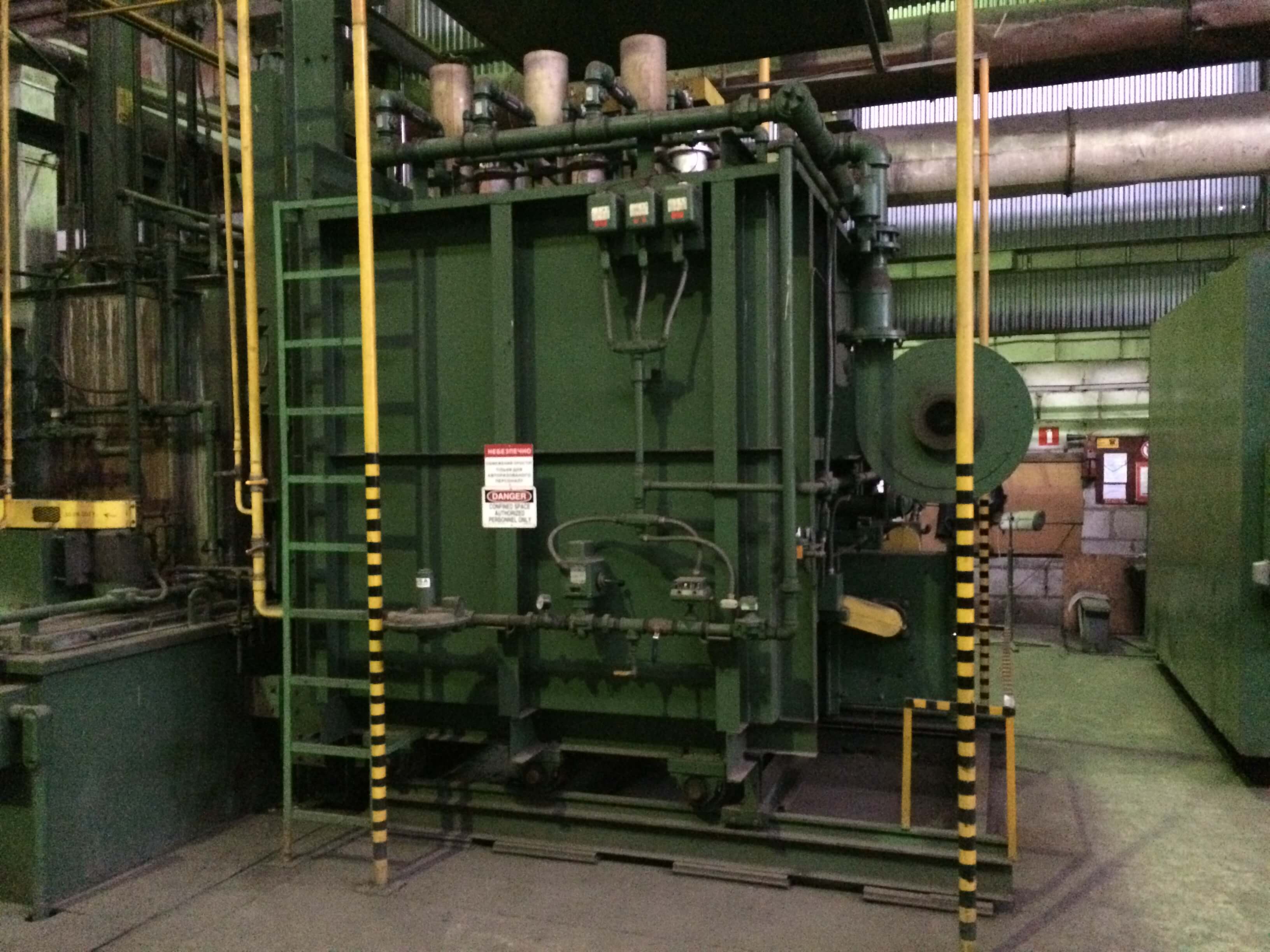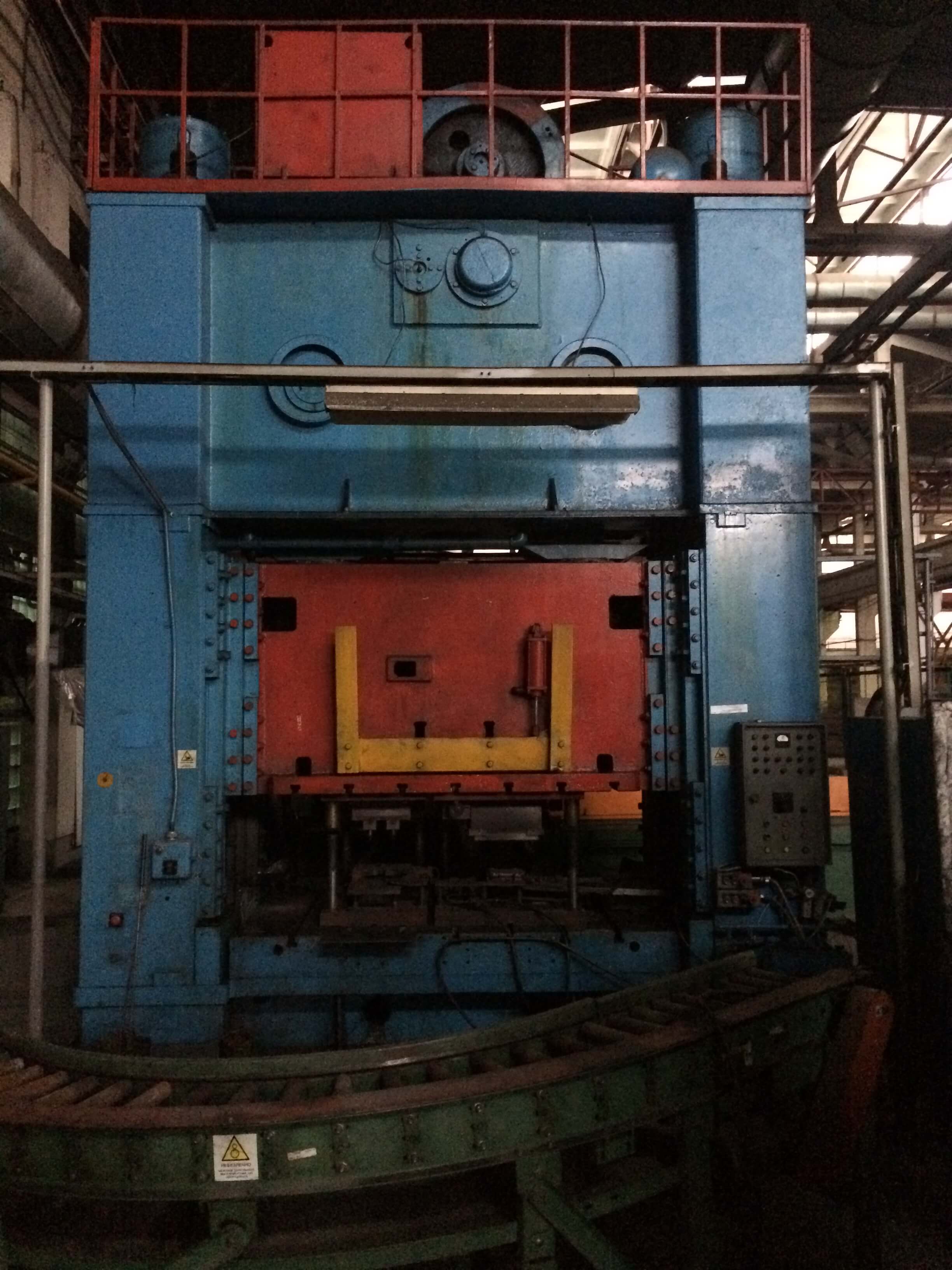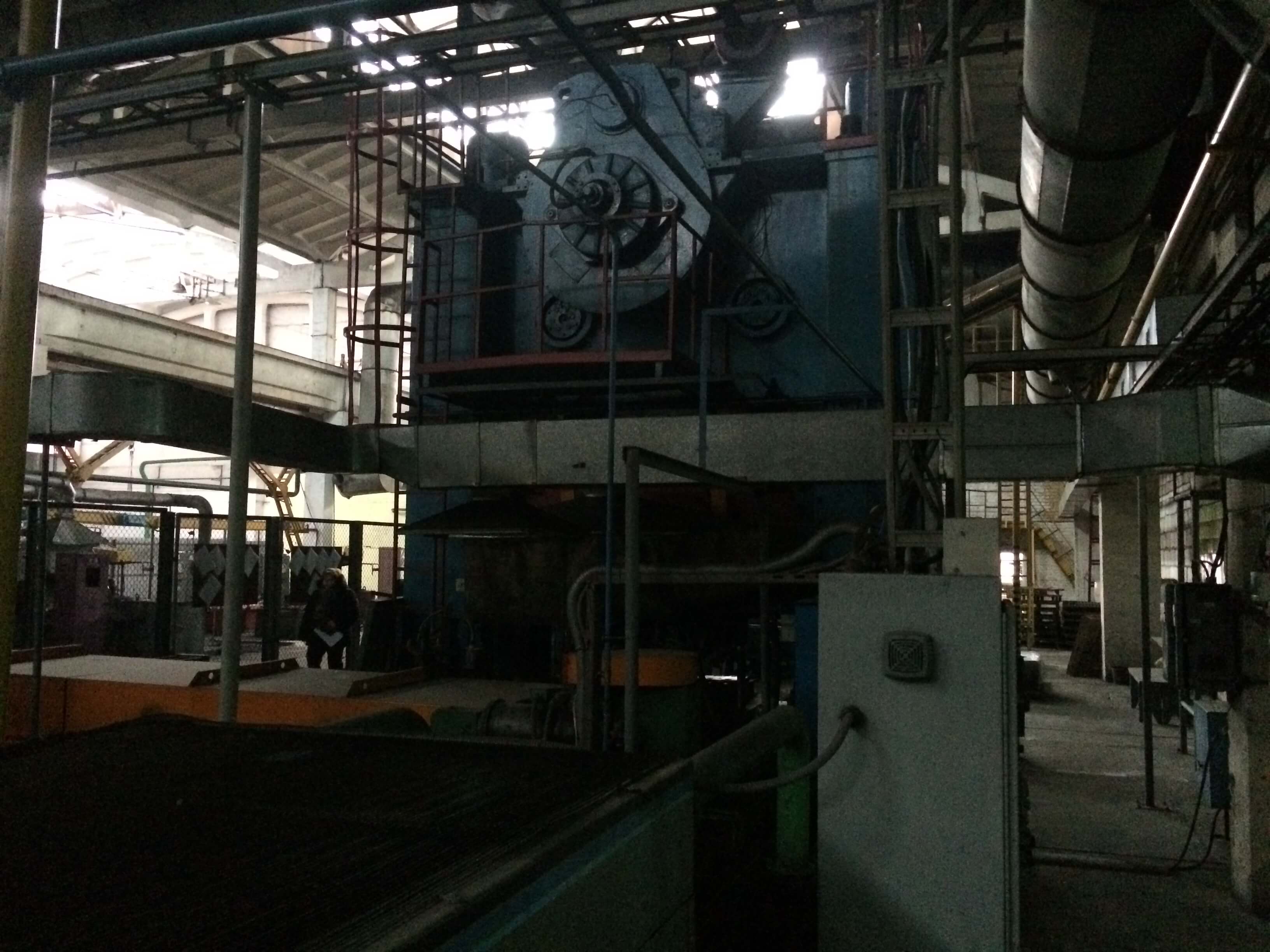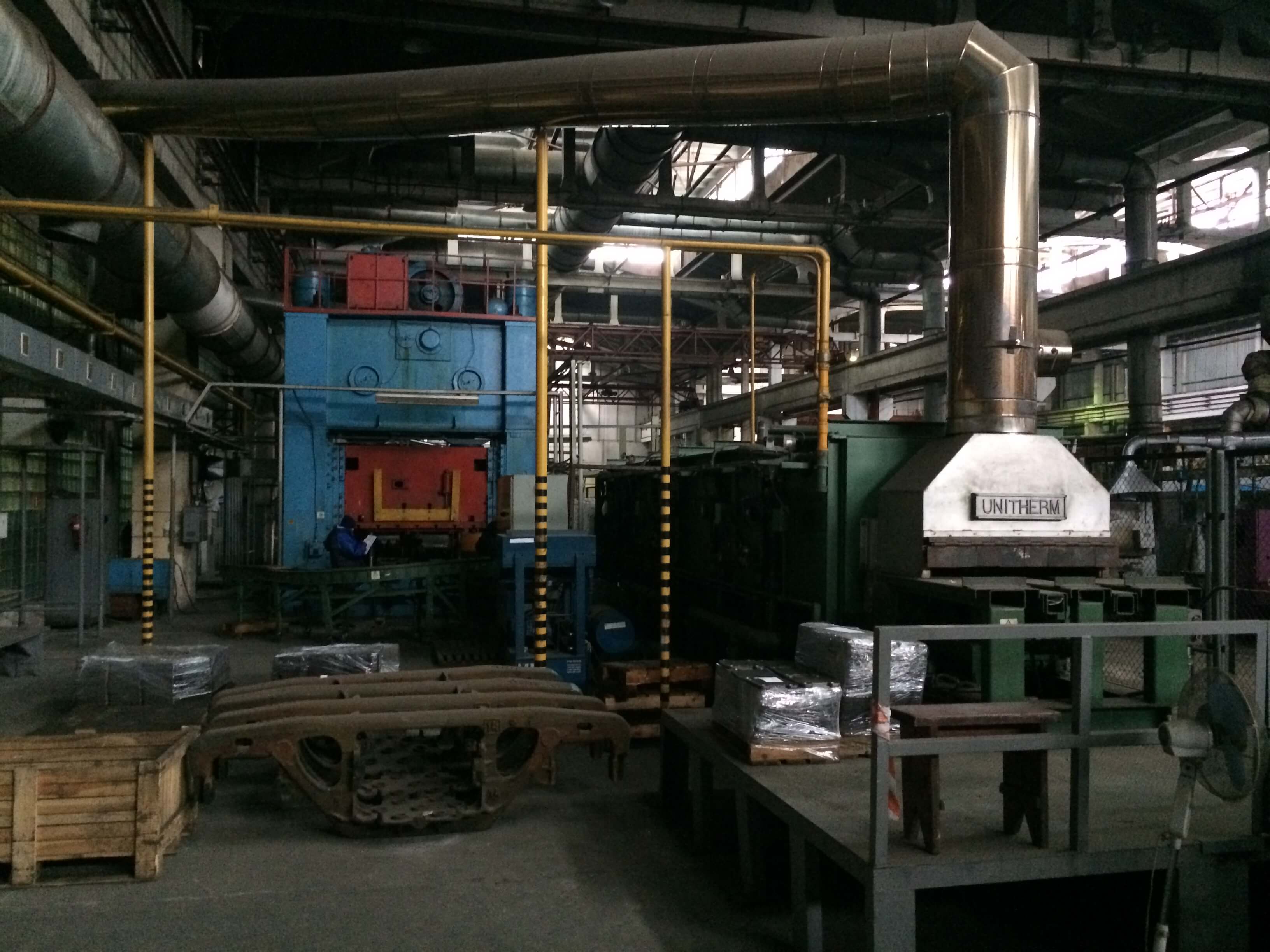Austempering is a isothermal heat treating process with producing the bainite microstructure.
Austempering
Austempering is a isothermal heat treating process with producing the bainite microstructure. Austemestring consists of two operations: the first one is austenization, which means, heating to a quench temperature to produce austenite and holding at the selected temperature; the second operation is salt quenching (overquenching of austenite with its subsequent transformation under isothermal conditions). As the result of austempering, ductile iron is transformed to austempered ductile iron (ADI) with a microstructure called bainite, so we get parts and components made of ADI. Our company has a high-technology line (manufactured in the U.S.A.), which allows to austemper parts with a total weight of up to 1,500 kg and with overall dimensions up to 850 × 850 × 1100 mm; the temperature of the molten salt may be maintained within 160-350 °C.
As the result of isothermal hardening, the mechanical characteristics of a material show significant improvement. Depending on the parameters of the isothermal process with producing an upper or lower bainitic microstructure, the combination of the characteristics may be as follows: tensile strength σв = 900 – 1500 MPa, yield strength σ0.2 = 600 – 1100 MPa, elongation δ = 2 – 18%, hardness НВ = 300 – 500. Austempering provides a 50% and more increase in the level of performance characteristics with a significant technical and economic effect. The wear resistance of ADI is significantly higher than other grades of cast irons, carbon and alloyed steels. This is explained by the austenite-bainitic structure of the metal matrix. Inclusions of spheroidal graphite provide good wear performance under the condition of dry friction and extreme pressure properties.
The fatigue strength of ADI is quite high and is at the level of high-strength steels, and in some cases exceeds them. The endurance limit of ADI is closely related to static strength. While static strength is increasing, fatigue strength is increasing too. Damaged parts made of ADI are able to function for a longer time, in comparison with those made of other materials, from the moment of the origination of a fatigue crack to final fracture. This ability of ADI to prevent the propagation of a fatigue crack makes it preferable among other structural materials for the production of parts subjected to cyclic loads while in service.
The corrosion resistance of ADI is much higher than that of steels, moreover, no scale is formed on cast iron, as it happens with steels. The wear resistance in “metal-to-metal” friction points of components made of cast iron subjected to austempering in combination with high-hardness alloy steels (400 HB and more) is approximately five times higher compared to steel-to-steel friction points. Quenching in molten salt may be used during the production of tools and die blocks. When tool steels are subjected to austempering, there is produced a structure of acicular troostite (bainite) with a hardness close to martensite, but tougher and harder. At the same time, there is no need in tempering, parts have no internal stresses and cracks.



